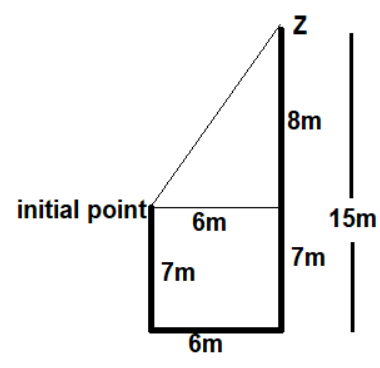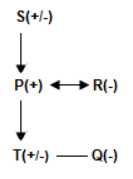Your presence of mind is all you need while taking aptitude test for various exams such as SBI PO PRELIMS, IBPS PO PRELIMS, IBPS CLERK PRELIMS. If you are well versed in the subjects then Reasoning Ability makes it even easier to score good in the exams.
We know that one of the right approaches to handle Reasoning Ability section is to solve all the mini questions in the least possible duration so that you get enough time for comparatively big and difficult ones. It not only increases the confidence but also contributes to the scores.
Take this interesting quiz of 10 questions which is designed to test your speed and analyze your reasoning ability. Each of the ten questions contains five options and only one of the options is correct. The target for you is to solve all these questions within eight minutes.
So, get your head on straight and gear yourselves up for this helpful mini quiz.
For more reasoning questions, take FREE TOPIC WISE QUIZZES and MINI MOCK TESTS
Question 1: How many pairs of letters are there in the word ‘FACTOIDS’ which has as many letters between them in the word as in the English alphabetical series?
a. Three
b. One
c. Two
d. Four
e. None of the above
Answer: e
Solution: There is no such pair which has as many letters between them in the given word as in the English alphabetical series.
Hence, option e.
Question 2: In the given arrangement, how many such letters are there which are immediately followed by a number and immediately preceded by a symbol?
$ B # 4 & E D 2 * G 9 P 8 3 U A 7 Y 6 @ C 5
a. One
b. Two
c. No such letter
d. Three
e. None of the above
Answer: b
Solution: $ B # 4 & E D 2 * G 9 P 8 3 U A 7 Y 6 @ C 5
There are two such letters in the given arrangement which is immediately followed by a number and immediately preceded by a symbol.
Hence, option b.
Take IBPS PO Prelims Free Test
Question 3: Five persons S, T, U, V and W have different number of coins. T has more coins than U and S. W has more coins than V. S doesn’t have fewer coins than W. Person with 2nd highest coins has 34 coins and S has 25 coins. Person with 2nd lowest number of coins may have ___ coins.
a. 28
b. 26
c. 20
d. 35
e. None of the above
Answer: c
Solution: As T has more coins than U and S.
W has more coins than V. S doesn’t have fewer coins than W. Person with 2nd highest coins has 34 coins and S has 25 coins, so
T >U(34) > S(25) > W > V
W must have less than 25 coins.
Hence, option c.
Take IBPS Clerk Prelims Free Test
Question 4: In the question below there are three statements followed by two conclusions I and II. You have to take the three given statements to be true even if they seem to be at variance from commonly known facts and then decide which of the given conclusions logically follows from the three statements disregarding commonly known facts.
Statements:
At least some traders are godowns
No godowns is onions
All onions are tomatoes
Conclusions:
I. Some tomatoes are not godowns
II. All traders being onions is a possibility
a. Only conclusion I follows
b. Only conclusion II follows
c. Both conclusions I and II follow
d. Neither conclusion I nor conclusion II follows
e. Either conclusion I or conclusion II follows
Answer: a
Solution: Following figure can be formed:

Since, all tomatoes cannot be godowns so conclusion I is true. All traders cannot be onions because some traders are godowns and all godowns are not onions.
Hence, option a.
Buy PracticeMock Pro 12 Months Plan @Rs799
Question 5: In the question below there are three statements followed by two conclusions I and II. You have to take the three given statements to be true even if they seem to be at variance from commonly known facts and then decide which of the given conclusions logically follows from the three statements disregarding commonly known facts.
Statements:
10% truth is false
Some false is correct
Mostly correct is answer
Conclusions:
I. No answer is truth
II. Some false is answer
a. Only conclusion I and conclusion II follow
b. Only conclusion II follows
c. Only conclusion I follows
d. Neither conclusion I nor conclusion II follows
e. None of the above
Answer: d
Solution: Following figure can be formed:

From the above the figure it is clear that both of the conclusions do not follow.
Hence, option d.
Buy PracticeMock Pro 6 months Plan @499
Question 6: A person starts walking in south direction and walks a distance of 7 meters. Now he took a left turn and walks 6m. Again, he takes a left turn and walks 15m and reached a point Z. Find the distance between starting point and Z and in which direction is the person from the initial point?
a. 10m Northeast
b. 12m Northwest
c. 5m Southeast
d. 9m Southwest
e. None of these
Answer: a
Solution: Following figure is formed:

So, by using Pythagoras theorem, we get,
The distance between initial point and Z is 10m and point is in northeast of initial point.
Hence, option a.
Get access to SBI PO Packages starting @299
Question 7: In the question, assuming the given statements to be true, find which of the conclusion (s) among given three conclusions is /are definitely true and then give your answer accordingly.
Statements: P < S ≤ L; B > D; M ≤ N ≥ P > Q; A < L ≤ B
Conclusions:
I. M < L
II. B > P
III. Q < A
a. Only conclusion II is true.
b. Both conclusions II and III are true.
c. Only conclusion III is true.
d. Both conclusions I and III are true.
e. All conclusions I, II and III are false.
Answer: a
Solution: Given statements: P < S ≤ L; B > D; M ≤ N ≥ P > Q; A < L ≤ B
On combining, we get
M ≤ N ≥ P < S ≤ L ≤ B > D; A < L ≥ S > P > Q
Conclusions:
I. M < L: False (As M ≤ N ≥ P < S ≤ L, relation between M and L can’t be determined)
II. B > P: True (As P < S ≤ L ≤ B, so B > P)
III. Q < A: False (As A < L ≥ S > P > Q, relation between Q and A can’t be determined)
Hence, option a.
Get access to IBPS PO Packages starting @299
Question 8: In a code language, INCREMENTS is written as JLAPFKFLRQ. How will PROJECTILE be written as in that language?
a. NPPHFARJJF
b. QSPKFDUJMF
c. NPPJEBRJFJ
d. MPPHFAJRFJ
e. None of the above
Answer: a
Solution: All the vowels are replaced by their immediate succeeding letter in the alphabetical series and all the consonants are replaced by their 2nd preceding letter in the alphabetical series.
Hence, option a.
Get access to IBPS Clerk Packages starting @275
Question 9: In a certain language, ‘east of west’ is coded as ‘mat, sat, tan’, ‘move west direction’ is coded as ‘cat, nat, sat’ and ‘east direction of pole’ is coded as ‘rat, cat, mat, tan’, then ‘move pole’ is coded as ____.
a. nat tan
b. rat sat
c. rat nat
d. cat mat
e. None of the above
Answer: c
Solution: In a certain language
From statement I and III, we conclude that “east” and “of” are coded as “mat” and “tan”.
From statement II and III, we conclude that “direction” is coded as “cat”
From statement II alone, we conclude that “move” is coded as “nat”
From statement IV alone, we conclude that “pole” is coded as “rat”
‘move pole’ is coded as ‘nat rat’
Hence, option c.
Question 10: There are five persons in a family, which consists of only one married couple. R is the daughter in law of S. P is the father of T but not married to S. How is Q related to S, if Q is the sister of T?
a. Son
b. Granddaughter
c. Daughter
d. Niece
e. None of these
Solution: Family tree:

Q is the granddaughter of S.
Hence, option b.
Hope you scored well!
Take Free Tests for SBI PO Prelims, IBPS PO Prelims and IBPS Clerk Prelims for better scores!
- Sign Up on Practicemock for Updated Current Affairs, Free Topic Tests and Free Mini Mocks
- Sign Up Here to Download Free Study Material
Free Mock Tests for the Upcoming Exams
- RRB PO 2024 Free Mock Test
- RRB Clerk 2024 Free Mock Test
- SSC MTS Free Mock Test
- SSC CHSL Free Mock Test
- SSC CGL Free Mock Test
- GATE Mechanical Free Mock Test
- GATE Civil Free Mock Test
- NABARD Gr. A Free Mock Test
- SBI Clerk Mains Free Mock Test
- SSC CPO Free Mock Test
- AFCAT Free Mock Test
- CAT Free Mock Test
- NIACL Assistant Free Mock Test
- UIIC AO Free Mock Test
- UIIC Assistant Free Mock Test
- GIC Assistant Manager Free Mock Test
- NICL AO Free Mock Test
- Free SSC Live Test
- UPSC CSAT Free Mock Test
- CDS-I Free Mock Test
- RRB ALP Free Mock Test


